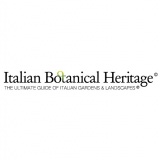
Villa Brusoni Scalella's park is one of the most fascinating and mysterious gardens on the Riviera del Brenta in Venice, Veneto. The consistency of the design and the ingeniousness of the complex solutions of the water system make us think that a high-level designer worked on this, and often the name of the architect Giuseppe Jappelli was made to answer this question.
Actually, there are no documents that can prove this attribution. But a series of documents relating to requests for water supply from Brenta, for the decoration of the "garden", would suggest its creation from 1852 onwards, years immediately following the death of the famous architect. The manor house and the oratory colannades are probably back from the XVII or XVIII century.
The presence of water and its extraordinary use characterize all the property. The starting point of the complex water system is on the north of the house where the water coming from Brenta immediately divides into two paths that proceed on two different levels. The highest course feeds the small pond and from there flows further dividing in two: one continues to the tower and the other along the lake ending in it close to the Fisherman's cottage.
The other course feeds, in succession, a small fishpond in front of the villa, a well, and finally also flows into the lake, which is the element around which the whole composition revolves. In addition to the extraordinary presence of water, the park has many distinctive features of the landscape style: there is a studied alternation of full and empty, soft terrain elevations always create new visuals, sinuous paths open intriguing visuals and there is a continuous interweaving between paths and waterways.
There are also some characteristic architectural works of the repertoire of the time, that make a few points even more fascinating: the Fisherman's cottage on the shore of the lake, the neo-Renaissance tower on the hill, the icebox with a Gothic arch access, the House of deers. In addition, a rich stone-like apparatus emphasizes salient points hidden between the exuberant vegetation.
The park is also of great interest from the botanical point of view. There are numerous monumental examples including specimens like some oaks (Quercus robur), an extraordinary red beech (Fagus sylvatica Atropurpurea) and a coast redwood (Sequoia sempervirens) of considerable size. Other interesting specimens to be found here are are Magnolia grandiflora, Platanus occidentalis, Sophora japonica, Taxodium disticum and many other species, comparable to the repertoire of the English landscape botanical garden. The enchanting undergrowth has many evergreen species including Aucuba japonica, Ligustrum japonicum, Laurus nobilis and Bambusa mitis. Everything contributes to giving a fairy-tale charm to this garden.



